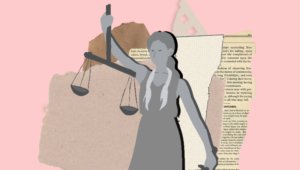This week is Arts Week on campus, an annual celebration of the arts and the students who create them. It is also an occasion to remember that the many artists in our community often have to overcome barriers that make it difficult to excel and pursue their passions here on campus.
This editorial board believes that Georgetown needs to improve the accessibility of student arts programs to make it easier for students to participate in classes and extracurriculars that allow them to express themselves and contribute to the arts on campus.
While Georgetown is not traditionally an arts school, it is important for all college students to have opportunities to develop and refine artistic skills if they wish. The arts provide an outlet for individual expression and can be a means for personal growth. College presents a rare opportunity to explore expressive possibilities, and the university should encourage students to do so. If Georgetown is going to continue offering majors and classes in the arts, it needs to make sure students can easily pursue them both academically and recreationally.
The barriers for students to participate in these programs begin with fees. Some classes require students to pay for their course materials and fees on top of tuition. Enrollment for classes includes a $50 fee for theater courses, a $100 fee for music performance courses like orchestra and jazz ensemble, and a $130 fee for courses for the visual arts. While the materials, space, and equipment for these courses cost money, it is unfair that an art student would have to pay more for their classes than someone studying government or theology.
There is also a lack of space on campus for students to pursue their artistic interests. Not enough practice spaces exist to handle the number of musicians on campus. As a result, the few spaces available, like the four music rooms in the Healey Family Student Center, are constantly occupied. For musicians like pianists or drummers, there are few public instruments available for practice. Unless these students are registered in a music course, it is difficult to access instruments, space, and amplification equipment.
Other artists also need to be registered in arts courses to have access to the facilities they use for their work. Visual artists cannot use the sculpture studio in Walsh without being enrolled in a sculpture course. Some artists have no facilities at all—Georgetown has no kiln for potters or ceramicists.
Students who participate in theater faced the loss and replacement of the Walsh Black Box theater last fall with the construction of the new de la Cruz Art Gallery, giving them fewer performance spaces and forcing them to move some shows to the Village C Theater. Though the de la Cruz Art Gallery does increase art visibility on campus, the loss of a student work space severely constrains student artists. The reduced number of locations available for student arts on campus limits students’ possible creative output.
To be fair, Georgetown does provide some support for the arts. Film and media studies courses do not have additional fees. The Maker Hub provides a new location for students to work on their own creative projects. The Gelardin New Media Center also allows students to access video and photography equipment they might not otherwise be able to use.
These suggestions cost money, but the university should make the sacrifices necessary to create basic art programs that are easy to use and available to all students, and there is certainly a demand. This campus is full of musicians, performers, and artists who are passionate about what they do, who would create new and valuable pieces with more support and resources that all students could appreciate.
Georgetown needs to improve its support for the arts if it is going to be a holistic home and learning environment for educating the whole of its students during their time here. Students’ artistic work is reason enough to improve the arts on campus, because the arts make the Georgetown community a bright, well-rounded, and stimulating place for all of the people who live and work on our campus.




